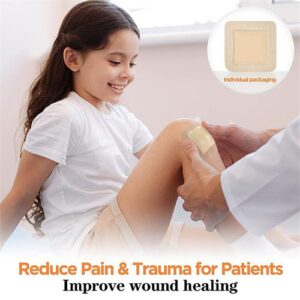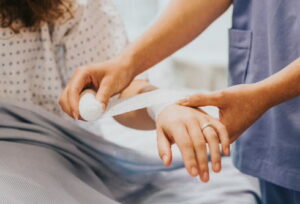In this article, we will explore 10 fascinating facts about gauze, from its history to its modern-day uses. Join us as we delve into the world of this versatile material and discover why it remains a vital component of medical care.
Types of Medical Gauze
There are several different types of gauze, each with its unique properties and applications. In this section, we’ll explore the three main types of gauze: woven, non-woven, and sterile. We’ll examine the advantages and disadvantages of each, as well as their specific uses in medical settings.

Medical Woven Gauze
Woven gauze is a traditional type of gauze that is made by weaving fibers together. This type of gauze is commonly used in medical settings and is known for its strength and durability. It is typically made from cotton or a blend of cotton and other materials. Woven gauze is commonly used for wound care, dressing changes, and as a primary or secondary layer of protection for surgical incisions.
The advantages of woven gauze include its ability to provide a high level of absorbency and its cost-effectiveness. It is also easily available and can be found in a variety of sizes and shapes. Additionally, woven gauze is reusable and can be washed and sterilized for future use.
However, there are some disadvantages to woven gauze. One of the biggest drawbacks is that it can be stiff and uncomfortable to wear for extended periods. It can also become less effective as it becomes saturated with wound exudate. Finally, the woven fibers of medical gauze can sometimes become entangled with the wound bed, making removal difficult and painful.

Medical Non-woven Gauze
Medical non-woven gauze is a newer type of gauze that is made by bonding fibers together with heat and pressure instead of weaving them together. This creates a softer and more flexible material that is often preferred for wound care. Non-woven, gauze today is commonly made from rayon, polyester, or a blend of materials.
One of the biggest advantages of non-woven gauze is that it is more comfortable to wear than woven gauze. It conforms easily to the wound bed, which makes it less likely to stick or become entangled with the wound. Non-woven gauze is also more effective at absorbing wound exudate than woven gauze, making it a popular choice for wound care.
However, non-woven gauze can be more expensive than woven gauze, and it is not as widely available. It is also less durable than woven gauze and may need to be changed more frequently.

Medical Sterile Gauze
Sterile gauze is any type of gauze that has been sterilized to prevent the introduction of bacteria or other microorganisms into a wound. This is particularly important in medical settings where infection control is a top priority. Sterile gauze is typically packaged in individual sterile packets or in a sterile container.
Sterile gauze is used in a variety of medical settings, including hospitals, clinics, and in-home care. It is used for wound care, dressing changes, and as a primary or secondary layer of protection for surgical incisions. In addition to preventing infection, sterile gauze can also help promote wound healing by providing a clean environment for the wound to heal.
The importance of sterile gauze in medical settings cannot be overstated. Using non-sterile gauze can introduce harmful bacteria and other microorganisms into a wound, which can lead to infection and other complications. By using sterile gauze, healthcare providers can help prevent the spread of infection and promote better outcomes for their patients.
Application of Medical Gauze
Medical Gauze is a versatile material that has various uses in the medical field. Here are some of the most common uses of gauze:
Wound Care
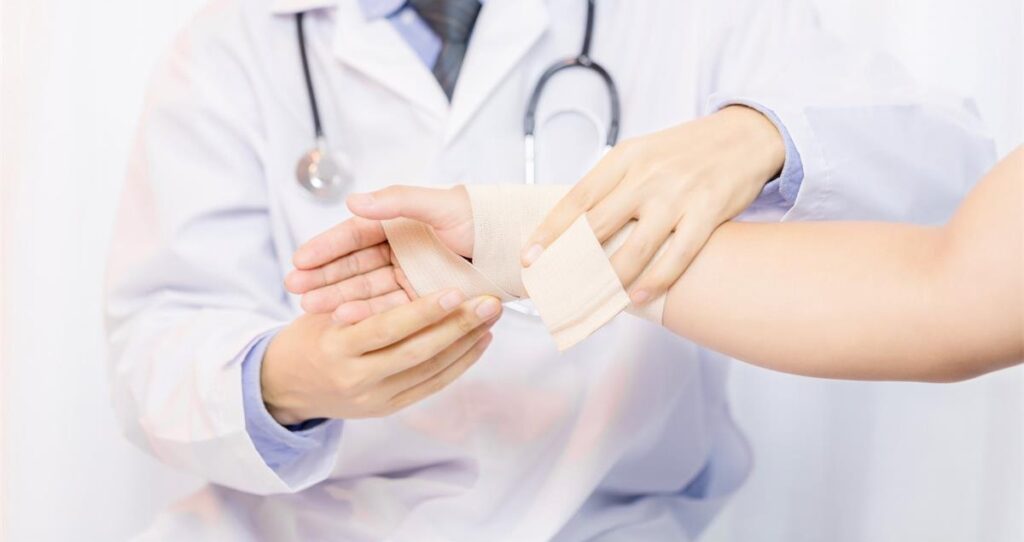
Medical Gauze is often used to dress wounds, especially those that are not too deep or severe. Gauze is an absorbent material that can soak up excess blood and other fluids from the wound, helping to keep it clean and dry. Gauze is also breathable, allowing air to circulate around the wound and promoting healing. Types of wounds that can be treated with gauze include cuts, scrapes, and burns.
Surgical Procedures
Medical Gauze is an essential component of surgical procedures. It is used to absorb blood and other fluids during surgery and to help keep the surgical site clean and dry. Gauze is also used to pack wounds and prevent bleeding during surgery. Types of surgical procedures that use gauze include open-heart surgery, orthopedic surgery, and neurosurgery.
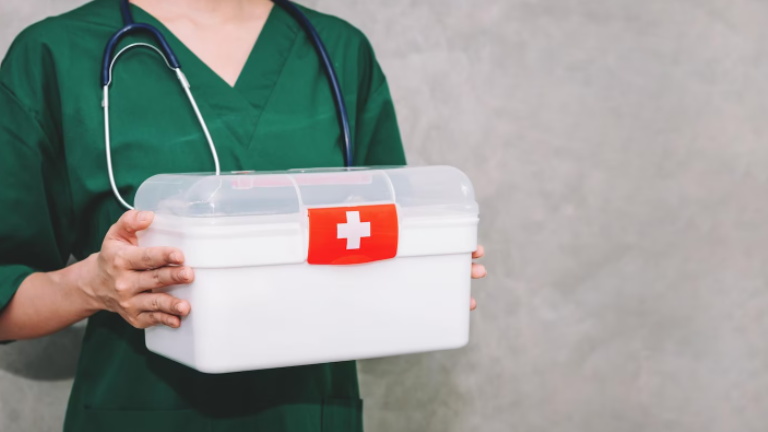
First Aid
A medical gauze is a must-have item in any first aid kit. It can be used to clean wounds, stop bleeding, and cover burns or other injuries. Gauze can also be used to make a makeshift splint or to secure a bandage in place. Common first aid situations that use gauze include minor cuts and scrapes, nosebleeds, and sprains.
Overall, gauze is an important tool in the medical field and is used in a variety of settings to help treat and prevent injuries and promote healing.
How Does Gauze Work
Wound care and healing
Medical gauze is a versatile material that works in various ways to help with wound care and healing. One of the primary functions of gauze is absorption. Gauze is designed to absorb fluids, such as blood or wound exudate. The absorption ability of gauze is affected by several factors, including the type of gauze used, the size of the wound, and the amount of fluid being produced.
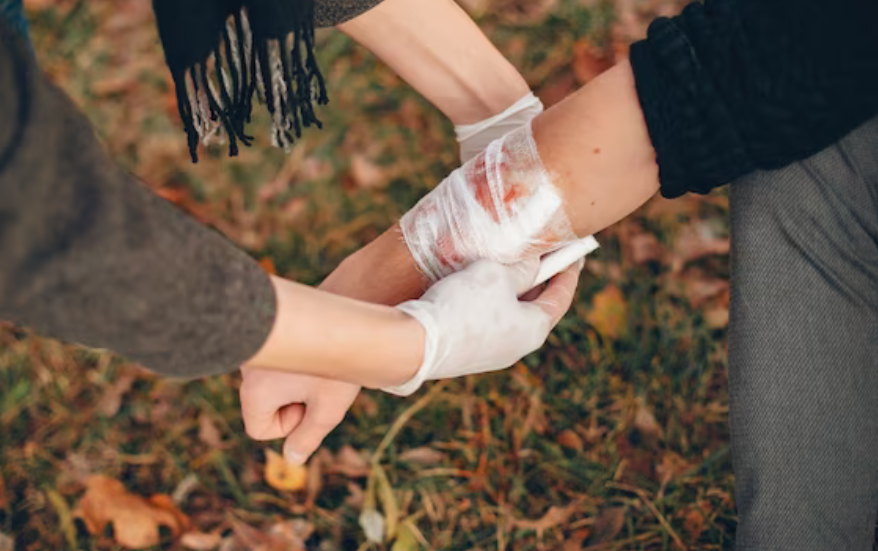
Hemostasis
Another way gauze works is by aiding in hemostasis, or the stopping of bleeding. Gauze can be used to apply pressure to a bleeding wound, helping to control bleeding until the wound can be treated more effectively. Some types of gauze, such as hemostatic gauze, are specifically designed for this purpose and contain materials that promote clotting.
Promote oxygenation
In addition to absorption and hemostasis, medical gauze can also help promote oxygenation in wounds. Oxygenation is important for wound healing because it supports the growth of new tissue and blood vessels. By promoting oxygenation, gauze can help speed up the healing process and reduce the risk of infection. Gauze can be used in conjunction with other wound care products, such as topical medications or dressings, to promote optimal wound healing.
Gauze Materials
Gauze materials play a crucial role in their effectiveness and suitability for various medical applications.
Medical Cotton Gauze
Medical cotton gauze is a widely used gauze material due to its softness and high absorbency. It is commonly used for wound care and surgical procedures. However, cotton gauze can also stick to the wound, which can cause pain and trauma during dressing changes. Non-stick gauze, on the other hand, is designed to prevent sticking and reduce pain during dressing changes. It is commonly used for burn injuries, where the risk of sticking is high. However, non-stick gauze may not absorb fluids as effectively as cotton gauze.

Medical Vaseline Gauze
Medical Vaseline gauze is a unique type of sterile gauze pad that is impregnated with petroleum jelly. It is used for wound care, particularly for burns and skin grafts, to prevent the dressing from sticking to the wound. Vaseline gauze is also used to promote moisture retention in the wound, which aids in wound healing. However, it is not suitable for wounds that require frequent dressing changes, as the petroleum jelly can build up and become difficult to remove. Overall, the choice of gauze material depends on the specific medical application and the needs of the patient.

How to Use Gauze
Proper Techniques for Applying Gauze
Gauze is a commonly used medical material in wound care and surgical procedures, but it is important to apply it correctly to ensure effective healing and prevent infection.
Proper techniques for applying gauze include cleaning the wound area thoroughly and gently patting it dry with a sterile cloth or gauze, applying any necessary medication or ointment, and then placing the gauze directly over the wound.
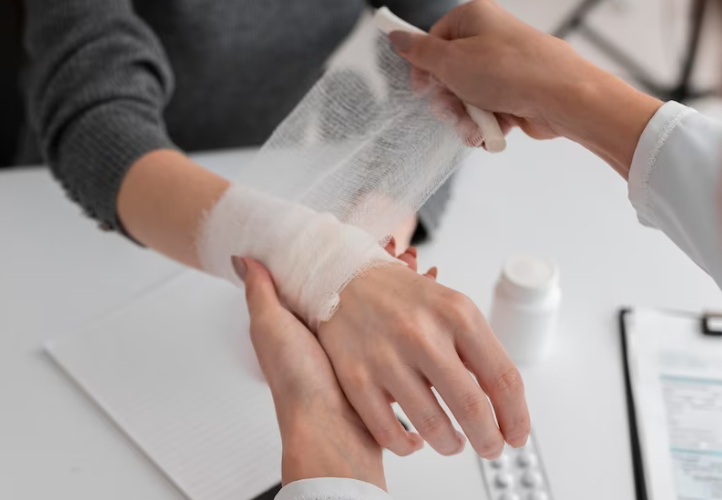
The medical gauze should be held in place with adhesive tape or a bandage, and the dressing should be changed regularly to prevent the buildup of bacteria or other pathogens. It is also important to avoid pulling or tugging on the gauze during dressing changes, as this can cause further tissue damage and delay healing.
By following these proper techniques for applying gauze, patients can promote effective wound healing and minimize the risk of infection or other complications.
How to Remove Gauze
Removing gauze from a wound is an essential step in the healing process. If done improperly, it can cause re-injury or delay the healing process. The following steps can help ensure safe and effective gauze removal:
- Wash your hands thoroughly with soap and water before touching the wound or the gauze.
- Gently loosen the gauze by moistening it with sterile saline solution or clean water. This helps to prevent the gauze from sticking to the wound. solution or clean water. This helps to prevent the
- Slowly and carefully remove the gauze from the wound, pulling it away from the wound bed. If the gauze sticks to the wound, wet it with more saline or water and wait a few minutes before trying again.
- As you remove the gauze, assess the wound for any signs of infection or bleeding.
- Discard the used gauze in a biohazard container or as directed by a healthcare provider. It is essential to remove the gauze gently and slowly to avoid damaging the newly formed tissue or reopening the wound. The importance of proper gauze removal cannot be overemphasized as it can prevent re-injury and promote faster wound healing.
Gauze Dressing Change Frequency
Gauze dressings are an essential component in wound care, and changing them at the appropriate frequency is crucial for proper wound healing. The frequency of gauze dressing change depends on various factors, such as the type and severity of the wound, the amount of drainage, the presence of infection, and the patient’s overall health. Typically, gauze dressings should be changed every 1-3 days, depending on the aforementioned factors.
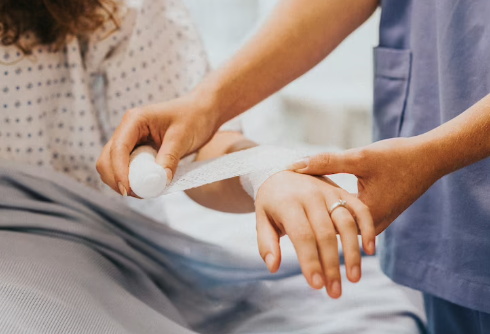
However, it is important to note that some wounds may require more frequent dressing changes, while others may require less frequent changes. The healthcare provider should evaluate the wound regularly to determine the appropriate gauze dressing change frequency. Failure to change the gauze dressing at the appropriate frequency can lead to wound infection, delayed healing, and increased pain and discomfort for the patient.
Medical Gauze and Bandages
Difference Between Gauze and Bandage
Gauze and bandages are both commonly used items in wound care, but they have distinct differences in terms of their composition and function.
Gauze is a thin and loosely woven fabric typically made of cotton or synthetic fibers. It is primarily used to cover and protect wounds, promote healing, and prevent infections. Gauze is designed to absorb fluids and exudates from the wound, and it comes in different forms such as woven or non-woven, sterile or non-sterile, and with or without adhesives. Gauze is commonly used in wound care because it allows air to circulate the wound, which promotes healing, and it can be easily cut to fit different sizes and shapes of wounds.
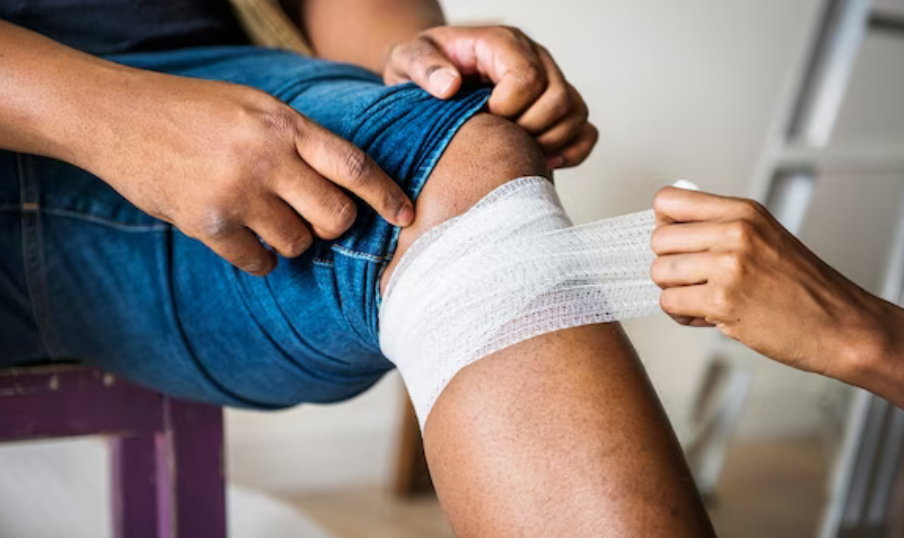
On the other hand, bandages are typically made of elastic or non-elastic materials and are designed to wrap around a wound to provide support, compression, and protection. Bandages are used to secure dressings in place, reduce swelling, and stabilize injured limbs or joints. They come in various shapes and sizes and can be made of different materials such as cotton, nylon, or polyester.
Choosing the right material between the sterile gauze pads/swabs and bandages depends on the specific need. For instance, if the wound is deep and bleeding heavily, sterile gauze should be used to absorb the blood and prevent infection.
However, if the wound is shallow and requires support and compression, a bandage would be the better choice. It is important to note that both gauze and bandages should be used according to their intended purpose to ensure proper wound care and promote healing.
Medical Gauze Pads vs Gauze Dressings
Gauze pads and gauze dressings are both commonly used in wound care, but they serve different purposes. Gauze pads are thin and flat and are typically used for small wounds that require minimal absorption. They can be used to cover a wound or to apply topical medication.
Gauze dressings, on the other hand, are thicker and have multiple layers of gauze that can absorb more fluids. They are often used for larger wounds or wounds that require frequent dressing changes.
When deciding which to use for a specific wound care situation, the size and depth of the wound should be taken into consideration. Gauze pads may be appropriate for smaller, shallower wounds, while gauze dressings may be better suited for larger, deeper wounds that require more absorption.
Additionally, the frequency of dressing changes should be considered. Gauze dressings may be a better option if frequent changes are needed to prevent infection or promote healing. It is always best to consult with a healthcare professional to determine the most appropriate type of gauze for a specific wound.
Medical Plaster Gauze
Plaster gauze, also known as plaster of Paris gauze, is a type of gauze that is coated with plaster. It is commonly used for creating molds or casts in orthopedic medicine, as well as for art and crafts projects. Plaster gauze is designed to harden quickly when it comes into contact with water, which makes it an ideal material for creating a rigid and durable cast.
One of the main advantages of plaster gauze is its ability to conform to the shape of the body or object it is applied, making it a versatile material for medical and artistic applications. Another advantage is its affordability, as plaster gauze is relatively inexpensive compared to other casting materials.
However, there are also some disadvantages to using plaster gauze. One is that it can be messy to work with, as the plaster can create dust and debris when it is being cut or applied. Additionally, plaster gauze can be heavy and uncomfortable to wear, particularly for extended periods of time.

Overall, plaster gauze is a useful material for creating casts and molds, but it may not be the best option for all applications. Healthcare professionals and artists alike should consider the advantages and disadvantages of plaster gauze before deciding to purchase or use it.
Conclusion
In conclusion, gauze is a crucial medical tool that has been used for centuries to promote wound healing and prevent infection. It is important to understand the different types of gauze available and their specific uses, as well as how to properly apply and remove gauze to avoid re-injury.
The absorption, hemostasis, and oxygenation properties of gauze are essential for wound healing, but it is also important to consider factors such as the type of wound, the amount of drainage, and the frequency of dressing changes when using gauze for wound care.
As technology advances, we can expect to see new innovations in gauze technology that will continue to improve wound healing outcomes. Overall, using gauze correctly and effectively in medical situations is crucial for promoting healing and preventing further complications.
What are the 7 types of bandages?
Bandages are an essential part of first aid kits and are used to secure dressings, control bleeding, and support injured areas. There are different types of bandages available, each with specific applications, advantages, and disadvantages. The following are the seven most common types of bandages:
High Elastic Bandage – This type of bandage is made of a stretchy material and is used to provide support to injured muscles or joints. It is commonly used in sports medicine to prevent further injury or strain.
Advantages: Provides excellent support and compression, and can be used on different body parts.
Disadvantages: May cause skin irritation or allergic reactions in some people.

Crepe Elastic Bandage – This is a soft, breathable bandage that is used to apply light compression and support for minor sprains or strains.
Advantages: Provides good support, is comfortable to wear, and is easy to apply.
Disadvantages: May slip or unravel if not applied properly.

POP Bandage – This is a plaster of Paris bandage that is used to immobilize and support fractures or other bone injuries.
Advantages: Provides strong support and immobilization.
Disadvantages: Can cause skin irritation or allergic reactions, and can be difficult to remove.

Triangular Bandage – This is a large, triangular bandage that can be folded and used as a sling, pressure bandage, or secure dressing.
Advantages: Versatile and can be used for different purposes.
Disadvantages: May not provide enough support for some injuries.

Gauze Bandage – This is a thin, breathable bandage that is used to cover and protect wounds. It is often used in combination with other types of bandages.
Advantages: Allows wounds to breathe, is absorbent, and can conform to different body parts.
Disadvantages: May not provide enough support or compression for some injuries.
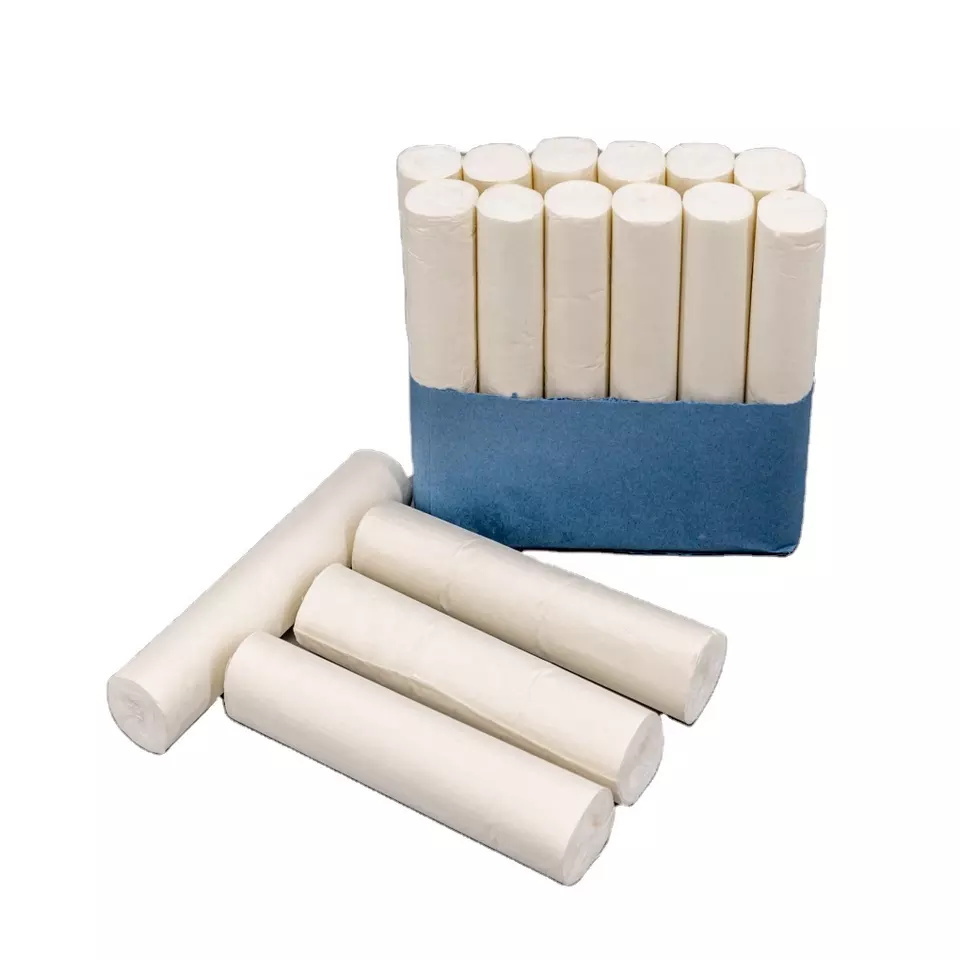
PBT Bandage – This is a non-woven bandage that is used to provide compression and support for sprains or strains.
Advantages: Provides good compression, is lightweight, and is easy to apply.
Disadvantages: May cause skin irritation or allergic reactions in some people.
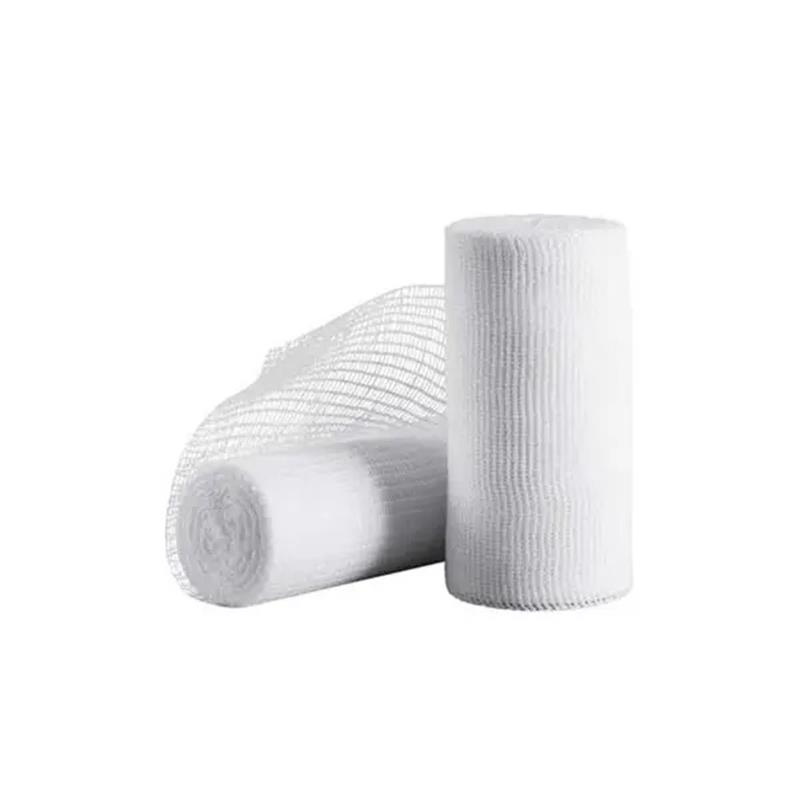
Adhesive Bandage – This is a small, adhesive bandage that is used to cover and protect small wounds or cuts.
Advantages: Easy to use, provides good protection for minor wounds.
Disadvantages: May not be suitable for larger wounds or injuries.
